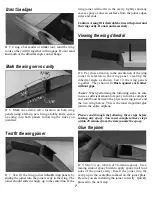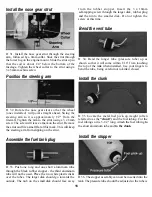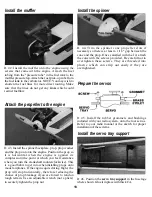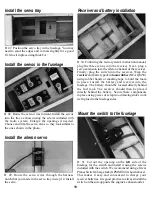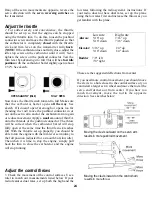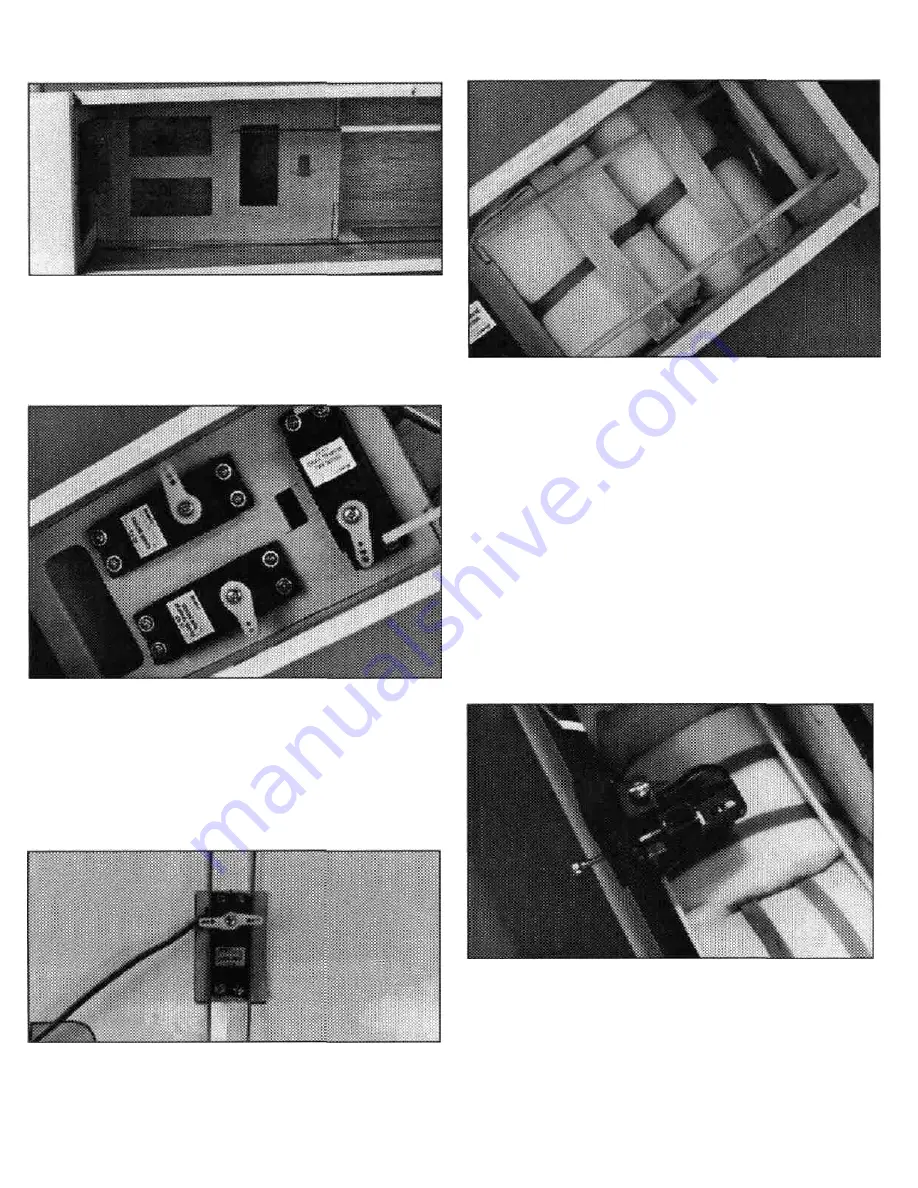
Install the servo tray Receiver and battery installation
D 47. Position the servo tray in the fuselage. You may
need to sand the edges and corners slightly for a good
fit. Glue it in place using thick CA.
Install the servos in the fuselage
D 48. Route the servo wires forward. Install the servos
into the tray as shown using the screws included with
the radio system. Enlarge the openings if needed.
Choose and trim the servo arms so they look similar to
the ones shown in the photo.
Install the aileron servo
D 49. Route the servo wires through the harness
notch that you made in the servo tray in step 14. Install
the servo.
D 50. Following the radio system's instruction manual,
plug the three servos into the receiver. Next, plug a
servo extension into the aileron channel of the receiver.
Finally, plug the switch into the receiver. Wrap the
receiver and battery pack in foam rubber (HCAQ1050)
using rubber bands or masking tape to hold the foam
in place. Install the battery and receiver into the
fuselage. The battery should be located directly behind
the fuel tank. The receiver should then be placed
directly behind the battery. Secure these components
in place using pieces of scrap wood (mixing sticks work
well) glued to the fuselage sides.
Mount the switch to the fuselage
D 51. Cut out the opening on the left side of the
fuselage for the switch and install it using the screws
included with the switch. We recommend using a Great
Planes Switch/Charge Jack (GPMM1000, shown above).
This makes it easy and convenient to charge your
receiver batteries. It is good practice to always install the
switch on the side opposite the engine's exhaust outlet.
19



